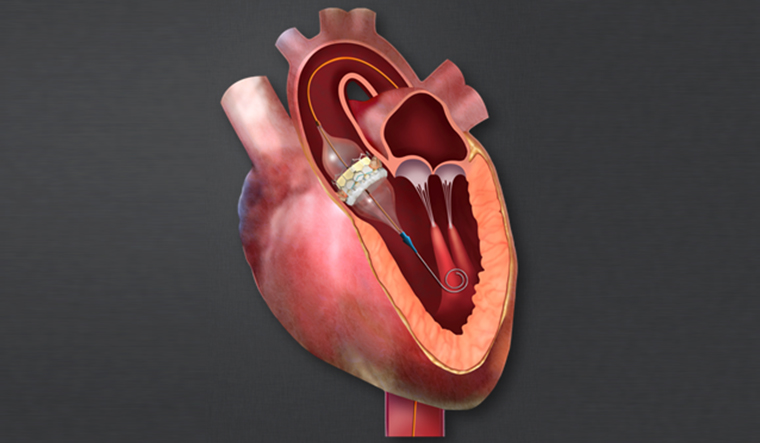The renowned Dr. Puneet K. Verma, MD, DM, FCSI, FACC Chief Cardiologist, ACE Heart & Vascular Institute, Mohali, Punjab and his team of doctors, nurses and technicians successfully carried out a Trans-catheter Aortic Valve Replacement (TAVR), the first in the country, on a male patient aged 94 years. Indeed, a remarkable medical feat in the troubled COVID times! Dr Verma strongly advocates this novel technique of treatment involving valve replacement in patients, who are in-operable or are at an intermediate to high risk for surgical valve replacement procedure.
In India, valvular disease accounts for 2.8%, out of which about 0.4% of patients have aortic stenosis. It is the commonest valvular heart disease afflicting the elderly and increases with age. The prevalence is 4.5% at age 75 years and about 9.0% at 85 years. Aortic valve stenosis occurs when the heart's aortic valve narrows down commonly due to aging and calcium build up preventing it from opening fully, thereby, obstructing blood flow from the heart into the aorta for onward circulation to the rest of the body. If left untreated, aortic valve stenosis can lead to debilitating symptoms ranging from exertional chest pain, dizziness, palpitations, shortness of breath, fatigue, weakness, unable to perform routine tasks without support, loss of consciousness, worsening breathlessness, ultimately leading to heart failure. Symptoms usually do not develop until after age 50 although individuals may have had a heart murmur at an earlier age.
Once a patient is examined by the doctor and the diagnosis confirms a severely diseased aortic valve from recommended tests such as an ECG, X-ray chest, echocardiography, more tests like coronary angiography and cardiac catheterization are carried out. The prognosis for such patients in the case of severely stenosed aortic valve can range from heart failure to stroke to heart rhythm failure and death. TAVR, has been found to be the safest and most effective method of treatment, especially for patients with co-morbidities.
Minimally invasive, TAVR is a catheter-based angioplasty like technique during which the doctors’ thread a catheter commonly through an artery in the groin and into the heart so that a new aortic valve can be fitted inside the diseased valve without surgically opening the chest. It is performed under x-ray visualization in the Cardiac Catheterisation Laboratory. The implanted valve is called "Trans-catheter heart valve" (THV) which is a tissue valve with very good durability sans the need of potent blood thinning medicines. After the procedure, the patient can be discharged in the next 3-4 days with the mental comfort of not having their chest opened surgically and so need not undergo long convalescence period.
TAVR is increasingly becoming a preferred alternative to surgical valve replacement. Of late, scientific data supports this technique as superior to surgery in low-risk patients as well with a near 50% reduction in risk of death, stroke, or rehospitalisation at one-year. Faster recovery time and associated clinical benefits for the patients are some of the reasons for this innovative technology’s growing adoption by the cardiologists worldwide. It is now being practised by select interventional cardiologists in India.
TAVI or TAVR was successfully carried out on the 94-years old patient, who had a history of heart ailments and was treated for them. Later, he developed signs and symptoms of congestive heart failure and severe aortic stenosis. Being an elderly patient, the risks of performing valve replacement surgery were very high and if left untreated at this age, most would suffer more complications or succumb in the next five years. The family was counselled on the risks and benefits of the surgery and TAVR, and the wish of the patient prevailed who wanted to get back to his physically active lifestyle. The procedure was carried out successfully on 19th June, 2020, without administering general anaesthesia and the patient was discharged after four days of stay in the hospital. His three-week recovery under supervision was very commendable. He is on minimal medication and no strong blood thinners or antibiotics have been prescribed to him.
Salute to this noble soul for whom age is just a number and is eager to get back to the golf course to hit the perfect Tee!
Dr. Puneet K. Verma,
MD, DM, FCSI, FACC
Chief Cardiologist,
ACE Heart & Vascular Institute,
Mohali, Punjab
+91 98155 77775
+91 98780 37582
puneet_verma@hotmail.com




